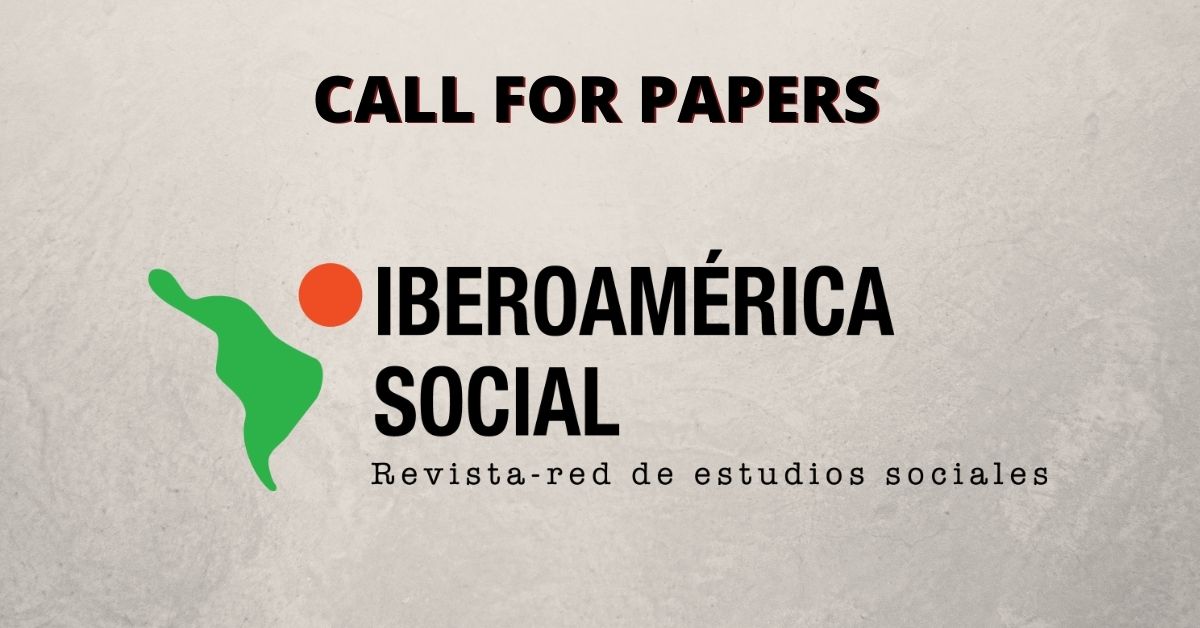Baños públicos. Fronteras de genero
Resumen
El siguiente artículo reflexiona sobre los límites simbólicos y materiales de un espacio público contemporáneo basado en un espacio clave como son los baños públicos. El creciente debate en los últimos años sobre los baños públicos y la población trans expresa un profundo proceso social de cambio en el reconocimiento político de los sujetos que no solo exigen un reconocimiento formal sino también un lugar en el mundo. El baño público representa una frontera (público / privado, hombre / mujer) y, por lo tanto, emerge como un síntoma de una economía significativa cambiante que modifica estructuralmente la organización social. En ese contexto, el siguiente trabajo intenta rastrear, desde la producción referente a la temática, el surgimiento histórico de estos espacios, así como sintetizar el estado del arte en torno a las discusiones. Finalmente, trataremos de abordar la situación actual en Argentina enfocándonos en la experiencia de algunos sujetos trans en Córdoba, teniendo en cuenta que, como lo señala Lohana Berkins (2003), representa el sector más vulnerable de los llamados sexuales minorías.
Descargas
Citas
Allouch J. (2003). Abord Psychanalytique de l’hétéronormativité. Exposé dans le cadre de la manifestation Citéphilo, à Lille. Disponível no site oficial de Jean Allouch; Acesso em 15 de agosto de 2017: http://www.jeanallouch.com/pdf/210.
Allouch J. (S/D). Le lieu de l’initiation. Publié sur le site officiel de Jean Allouch; Acesso em 12 de julho de 2017: http://www.jeanallouch.com/pdf/204.
Allouch, J. (1987). Un sexe ou l’autre, sur la ségrégation urinaire. Littoral, p. 3-25.
Benjamin, W. (2005). El libro de los Pasajes. Buenos Aires: Akal.
Berkins, L. (2003). Un itinerario politico del travestimo. Maffia, D. (coord.) Em: Sexualidades migrantes género y transgenero (p. 127-137). Feminaria editora. Buenos Aires.
Blidon, M. (2006). La dernière tasse. Espaces Temps. net, Association Espaces Temps.net, 2005. Acesso em 15 de agosto de 2017 : https://www.espacestemps.net/articles/la-derniere-tasse/
Browne, K. 2004. “Genderism and the Bathroom Problem: (re)materialising sexed sites (re)creating sexed bodies.” Gender, Place and Culture 11(3), p. 331-346.
Cahill, S. (1985). Meanwhile Backstage: Public Bathrooms and the Interaction Order.
Case, M. A. (2010). Why Not Abolish Laws of Urinary Segregation?. Toilet: Public restrooms and the politics of sharing, p. 211-225.
Cavanagh, S. L. (2010). Queering bathrooms: Gender, sexuality, and the hygienic imagination. University of Toronto Press.
Cavanagh, S. L. (2011). You are where you urinate. The gay and lesbian review, 18(4), p. 18-20.
Cavanagh, S. L. (2015). Trans performance ethnography: queer bathrooms stories as case study. Keynote given at the sexuality Studies Association meeting of SSHRC Congress, June 3, 2015, University of Ottawa, Canada.
Colomina, B. (1991). Sexuality and space. Princeton Arquitectural Press: Princeton.
Cooper, P., & Oldenziel, R. (1999). “Cherished Classifications: Bathrooms and the Construction of Gender/Race on the Pennsylvania Railroad During World War II.” Feminist Studies 25(1), p. 7-41.
Crenshaw, K. (1989). Demarginalizing the Intersection of Race and Sex: A Black Feminist Critique of Antidiscrimination Doctrine, Feminist Theory and Antiracist Politics. University of Chicago Legal Forum, Vol. 1989: Iss. 1, Article 8.
Damon, J (2009). Les toilettes publiques : un droit à mieux aménager. Droit social, n° 1, 2009, p. 103-110.
Fassin, E. (2008). L’empire du genre. L’histoire politique abigüe d’un outil conceptuel. L’homme, 2008/3-4, n° 187-188. p. 375-392. Éditions de l’EHESS. Paris.
Foucault, M. (1976). La politique de la santé au XVIIIe siècle, Les Machines à guérir, Aux origines de l’hôpital moderne; dossiers et documents, Paris, Institut de l’environnement, 1976, p. 11-21.
Gershenson, O. (2010). The restroom revolution: Unisex toilets and campus politics. In Harvey Molotch, & Laura Noren (Eds.), Unisex toilets and campus politics. Toilet: Public Restrooms and the politics of sharing. NYU Press. New York.
Gershenson, O., & Penner, B. (2009). Ladies and gents: Public toilets and gender. Temple University Press.
Goffman, E. (1977). The Arrangement between the Sexes Theory and Society, Vol. 4, No. 3. , pp. 301-331.
Jeffreys, S. (2014). The politics of the toilet: A feminist response to the campaign to ‘degender’a women’s space. In Women’s Studies International Forum (Vol. 45, p. 42-51). Pergamon.
Kogan, T. S. (1996). Transsexuals and Critical Gender Theory: The Possibility of a Restroom Labeled Other. Hastings LJ, 48, 1223.
Kogan, T. S. (2007). Sex-separation in public restrooms: Law, architecture, and gender. Mich. J. Gender & L., 14, p. 1.
Kogan, T. S. (2008). Transsexuals in public restrooms: Law, Cultural geography and etsitty v. Utah transit authority. Temp. Pol. & Civ. Rts. L. Rev., 18, 673.
Kogan, T. S. (2010). Sex separation. The Cure-All for Victorian Social Anxiety. In chapter politics of sharing.
Kopas, M. (2012). The Illogic of Separation: Examining Arguments About Gender-Neutral Public Bathrooms (Doctoral dissertation, University of Washington). Acesso em 12 de julho de 2017: https://digital.lib.washington.edu/researchworks/bitstream/handle/1773/20296/Kopas_washington_0250O_10083.pdf?sequence=1.
Lacan J. (1966). L’instance de la lettre dans l’inconscient ou la raison depuis Freud. Em: Écrits (p. 237-322) Le Seuil. Paris.
Longhurst, R. (2003). Bodies: Exploring fluid boundaries (Vol. 11). Psychology Press.
Molotch, H., & Norén, L. (Eds.). (2010). Toilet: Public restrooms and the politics of sharing. NYU Press.
More, A. (2008). Coming out of the water closet: the case against sex segregated bathrooms. Texas Journal of Women and the Law Volume 17, p. 297-315.
Penner, B. (2001). A World of Unmentionable Suffering: Women’s Public Conveniences in Victorian London. Journal of Design History, Vol. 14, No. 1 (2001), p. 35-51.
Penner, B. (2005). Researching female public toilets: Gendered spaces, disciplinary limits. Journal of International Women’s Studies, 6(2), p. 81-98.
Penner, B., Borden, I., & Rendell, J. (Eds.). (2003). Gender space architecture: An interdisciplinary introduction. Routledge.
Preciado, B. (2010). Basura y género. Basura y género. Mear/cagar. Masculino/femenino. Disponível em: http://www.iztacala.unam.mx/errancia/v0/PDFS/POLIETICAS%20DEL%20CUERPO%201%20BASURA%20Y%20GENERO.pdf : Acesso em 12 de julho de 2017.
Sayad, A. (1991). L’imigration ou les paradoxes de l’altérité. Paris: Raisons d’agir.
Simone, C., Kafer, A., Quizar, J., & Richardson M. (2004). “Calling All Restroom Revolutionaries!” p. 216-229 in That’s Revolting! Queer Strategies for Resisting Assimilation, edited by Mattilda Bernstein Sycamore. Brooklyn, NY: Soft Skull Press.
Snow, J. (1849). On the Mode of Communication of Cholera. Acesso em 15 de agosto de 2017: https://collections.nlm.nih.gov/ext/cholera/PDF/0050707.pdf.
Sullivan, L. (1896). The Tall Office Building Artistically Considered. Lippincott’s Magazine (March 1896), p. 403-409.
Tartarini, J. (2002) 1880-1930 La ciudad cosmopolita. Aguas Argentinas (Coord.) Em: Buenos Aires y el agua. Memoria, higiene urbana y vida cotidiana (p. 30-87). Aguas Argentinas. Buenos Aires
Transgender Law Center (2005). “Peeing in Peace: A Resource Guide for Transgender Activists and Allies. Urban Life 14(1), p. 33-58. Disponível em: http://translaw.wpengine.com/wp-content/uploads/2012/05/94930982-PIP-Resource-Guide.pdf Acesso em 12 de julho de 2017.
Publicado
Cómo citar
Número
Sección
Licencia

Esta obra está bajo una licencia internacional Creative Commons Atribución-NoComercial 4.0.






